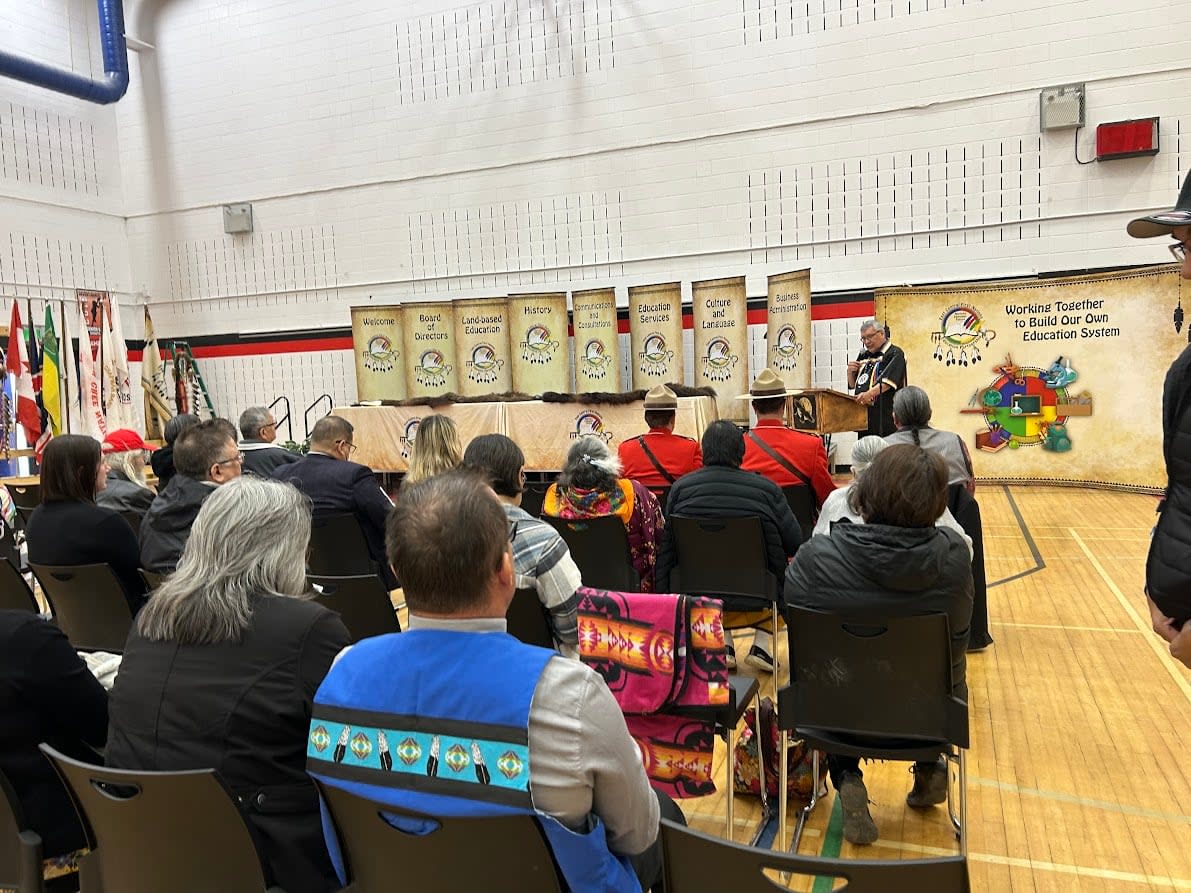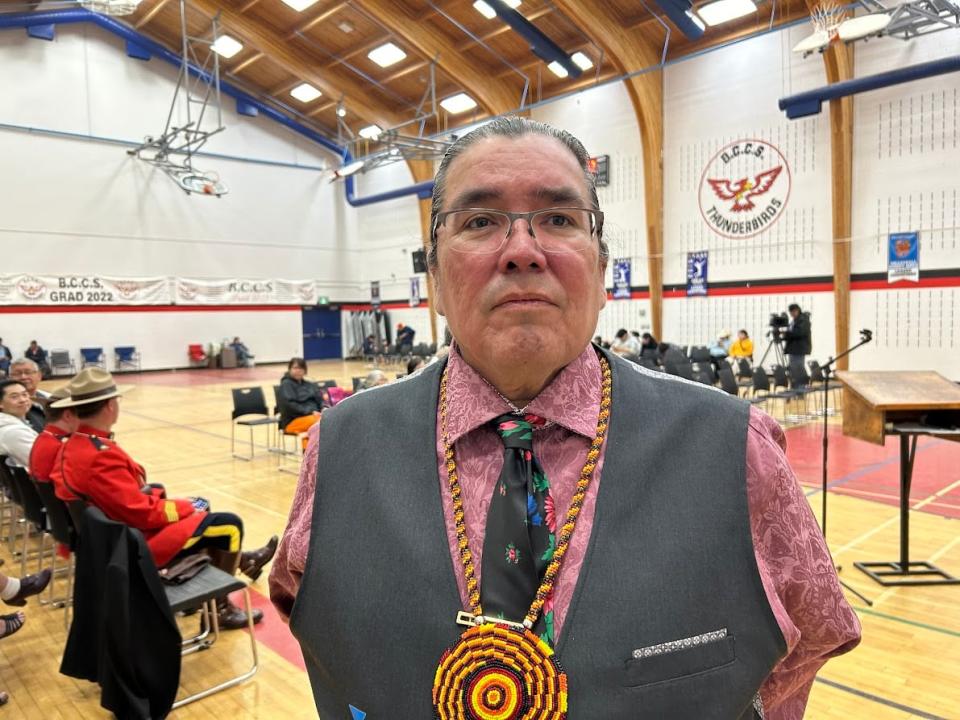James Smith Cree Nation officially opens educational authority

Students and educators have shared their hopes and examples of improved educational standards through a partnership at James Smith Cree Nation.
The official grand opening of East Central First Nations Education Partnership (ECFNEP) was celebrated on Thursday at a powwow ceremony at Bernard Constant Community School in James Smith Cree Nation, located approximately 200 kilometres northeast of Saskatoon.
It's been less than two years since 11 people were killed and 17 wounded at James Smith and in nearby Weldon, Sask., in a mass stabbing.
In 2017, the ECFNEP, a non-profit, was established to improve education standards on the reserve, including graduation, retention and enrolment rates.
In 2020, the partnership took over the administration of the school at JSCN.
Prior to the partnership, educational funding coming in from Indigenous Services Canada could be used by the communities for non-educational purposes. Now, the money flows directly to the partnership, which spends it on education alone.
Randy Constant, the director of education at the partnership, says the pandemic delayed the official opening of the partnership.

Randy Constant, the director of education at the East Central First Nations Education Partnership, says he is 'genuinely pleased and excited for the future.' (Pratyush Dayal/CBC)
Constant said since the operations began, the quality of education has improved and more students have enrolled.
"I'm genuinely pleased and excited for the future," Constant said. "Now, we have the opportunity to address the education program based on the needs of the community."
He said their partnership is being now recognized as an example of Indigenous education at provincial and federal levels.
Better education: students
Grade 10 student Leigha Sanderson said it has been a "really rough two years for the community."
"I've known a lot of people that have been affected by ]the massacre], and I've been affected by it, and it's just been really scary," she said.
Sanderson says the partnership has added much needed staff and capacities to the school, including a wellness room and more educational assistants.
"I'm really glad wellness room is a place where we can go be ourselves and feel at ease because they have a lot of support in there," Sanderson said.
For Grade 7 student Keslinn Burns, new courses such as land-based education have been very engaging.
"They take us out to go learn about land activities like fishing, hunting and cultural events," the 13-year-old said.
Leigh-Anna Head, another student, agrees.
"Like we learn how to survive …if we get stuck somewhere in the woods," she said.
Model for other nations
JSCN Chief Kirby Constant says this has been a long time coming: "Without our kids and youth, our histories and cultures will be lost."
He says the new, land-based education system is a reminder to the students that their people have always lived off the land.
"That's where all of our teachings come from," he said. "And bringing those back into the school and to mainstream education right now is a big improvement from one when I first went to school here.
"I just hope that other nations can piggyback off what we have been doing here and, going forward, they can use utilize the lessons learned for their curriculum."

